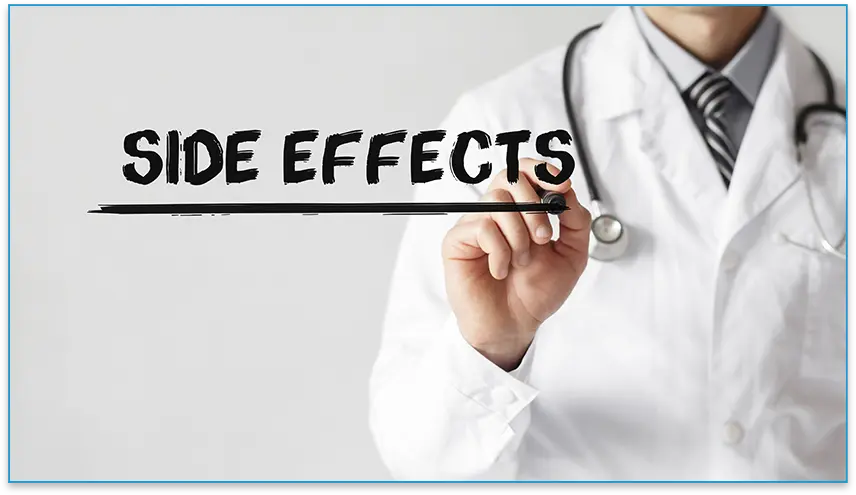Gynecomastia, commonly known as ‘gyno’, is a medical condition characterized by the enlargement of the breast tissue in males. Within the bodybuilding community, gynecomastia presents a unique set of challenges, both physically and psychologically. Bodybuilders may experience gyno due to hormonal imbalances often exacerbated by the use of anabolic steroids or other performance-enhancing drugs. The condition is not only a cosmetic concern but can also lead to discomfort and sensitivity.
Treatment for gynecomastia in bodybuilding is multifaceted, generally starting with an evaluation of contributing factors. Hormonal assessments and potential lifestyle changes are typically considered first. Medical treatments range from medication to surgery, with the latter being a common resolution for advanced cases where pharmacological interventions fail. Surgery, while effective, carries risks, and as such, careful consideration and consultation with health professionals are paramount.
Quick Summary
- Gynecomastia in bodybuilders is often due to hormonal imbalances and can cause both physical discomfort and aesthetic concerns.
- Treatment options include hormonal therapy or surgery, with lifestyle adjustments acting as a supplementary approach.
- Proper diagnosis and risk assessment are crucial before undertaking any gynecomastia treatment regimen.
Gynecomastia in Bodybuilding

Bodybuilding can sometimes lead to the development of gynecomastia due to hormonal fluctuations. This section explores the underlying causes and hormonal mechanisms responsible for this condition in bodybuilders.
Causes of Gynecomastia
Gynecomastia, commonly referred to as gyno, is the enlargement of breast tissue in males. In the context of bodybuilding, it is often associated with the use of anabolic steroids which can disrupt the body’s natural hormone balance. Anabolic steroids, designed to enhance muscle growth, can increase testosterone levels. However, the body may convert excess testosterone into estrogen through a process called aromatization, catalyzed by the enzyme aromatase. Since estrogen is the hormone that typically regulates female breast tissue growth, its increase can lead to gynecomastia in males.
- Reasons for gynecomastia development in bodybuilders:
- Use of anabolic steroids
- Increased aromatase activity
- Enhanced aromatization process
Hormonal Imbalances and Estrogen’s Role
The balance between estrogen and testosterone is critical for maintaining male physiological characteristics. When bodybuilders use steroids to boost testosterone for increased muscle mass, they inadvertently increase the amount of circulating estrogen as well. This is because the body seeks to maintain a hormonal balance. Estradiol, a potent form of estrogen, can become disproportionately high relative to testosterone. This hormonal imbalance prompts breast tissue development. The role of estrogen in gynecomastia is a pivotal one, as even natural bodybuilders may experience the condition if their hormonal balance skews toward higher estrogen levels.
- Key factors in hormonal imbalances leading to gynecomastia:
- Excess testosterone converting to estrogen
- Disproportionate levels of estradiol
- Hormonal fluctuations during steroid cycles
Common Symptoms and Diagnosis

Gynecomastia is characterized by the presence of enlarged breast tissue in males, a condition that is often both physically and psychologically discomforting. Recognizing the symptoms and obtaining an accurate diagnosis are critical steps in management and treatment.
Identifying Gynecomastia Symptoms
Gynecomastia manifests through various symptoms in males. The most common include:
- An increase in breast gland tissue
- Swelling or puffiness of the nipple area
- A rubbery mass that can be felt underneath the nipple
- The condition may occur unilaterally (one breast) or bilaterally (both breasts)
In some cases, pain or tenderness in the breasts may accompany these physical changes.
Medical Diagnosis Process
The diagnosis of gynecomastia is typically conducted by a healthcare professional through:
- Physical examination, where the healthcare professional will assess the chest for swollen or glandular tissue, and discern if the mass is firm and immovable, which is characteristic of gynecomastia.
- Medical history, to determine any potential causes or contributing factors.
Further diagnostic tests may include:
- Blood tests to analyze hormonal levels
- Imaging tests like mammograms or ultrasounds to evaluate the breast tissue
It’s important to distinguish gynecomastia from other conditions, such as lipomas or a breast cancer, which necessitates the involvement of medical professionals for accurate diagnosis.
Treatment Strategies for Gynecomastia

Effective management of gynecomastia in the bodybuilding community focuses on addressing hormonal imbalances that contribute to this condition. Treatment strategies range from medical interventions to lifestyle changes, each tailored to the severity and underlying causes of gynecomastia.
Medical Treatments
Medical treatments typically begin with pharmaceuticals designed to balance estrogen levels in men. Anti-estrogen drugs such as tamoxifen, an estrogen blocker, can be prescribed to mitigate the effects of gynecomastia. Selective estrogen receptor modulators (SERMs), like tamoxifen, work by occupying estrogen receptors, thereby blocking estrogen’s effects on breast tissue. Another class of medications, known as aromatase inhibitors, reduce estrogen production in the body.
- Tamoxifen: Generally recommended for mild to moderate gynecomastia.
- Aromatase inhibitors: Used when there is an excess of estrogen production.
Surgical Options
When medical treatment is insufficient, surgical intervention might be necessary. The two main surgical procedures are:
- Liposuction: This technique removes fatty tissue but not the glandular tissue itself. Ideal for patients whose gynecomastia is primarily the result of excess fatty tissue.
- Gyno Surgery (Surgical Removal): Involves the removal of the glandular breast tissue. It is a more comprehensive option and is considered for severe cases or when gynecomastia persists despite initial treatments.
Lifestyle and Diet Adjustments
Lifestyle and dietary changes can assist in the management and prevention of gynecomastia, particularly for bodybuilders who may inadvertently affect their hormonal balance through their dietary choices and supplement use. Emphasizing a diet that supports hormonal balance and managing body fat levels through exercise are non-invasive ways to address and prevent gynecomastia.
- Diet: Incorporate foods that naturally inhibit estrogen and maintain a balance between muscle gain and fat retention.
- Exercise: Regular exercise can decrease body fat and influence hormone levels positively.
Risks and Considerations in Treatment

When treating gynecomastia, particularly in the context of bodybuilding, it is critical to consider the potential complications and to understand the inherent risks associated with steroid use. These factors can affect the effectiveness of the treatment and ultimately determine the success and satisfaction of the patient.
Potential Complications
Gynecomastia surgery, like any other medical intervention, carries the risk of complications. These may include but are not limited to:
- Infection: Post-operative infections can delay healing and impact recovery.
- Scarring: While surgical techniques aim to minimize scarring, individual healing responses may vary.
- Asymmetry: Post-surgical symmetry is a common concern and may require additional procedures for correction.
Patients should engage with a healthcare professional to discuss personalized risks based on their health profile and to establish realistic expectations for surgery outcomes.
Understanding the Risks of Steroid Use
Steroid use, notably anabolic steroids and exogenous testosterone, can skew a person’s estrogen levels, leading to the development of gynecomastia. Risks associated with long-term steroid use include:
- Androgenic Effects: The alteration of hormone levels can cause significant and sometimes irreversible bodily changes.
- Legal and Health Consequences: Non-prescribed steroid use is illegal and can result in harm to multiple organ systems.
It is crucial for individuals considering or currently using anabolic steroids to consult healthcare professionals about the risks and safe management of androgens to reduce the chances of gynecomastia and other health issues.

Gynecomastia in bodybuilders substantially influences aesthetics and psychological well-being. Addressing both the physical and emotional facets is crucial for comprehensive treatment.
Embracing Body Positivity
Bodybuilders often face social distress due to the breast-like appearance associated with gynecomastia, commonly termed “man boobs.” A shift towards body positivity is essential. They should be encouraged to acknowledge that self-worth is not solely determined by muscle mass or the absence of male breast tissue.
Support Groups: Engagement with support groups can facilitate this acceptance.
Post-Treatment Cosmetic Outcomes
For many, plastic surgery may be a viable route to remove excess breast tissue and restore a more conventional male chest contour. Cosmetic outcomes significantly impact patient satisfaction and self-confidence.
- Psychological Benefits: Postoperative improvements in body image can lead to enhanced quality of life.
Patient-Satisfaction Rates:
- High with low recurrence of gynecomastia
- Contingent on surgeon expertise and realistic expectations
Frequently Asked Questions

What are effective methods to prevent gynecomastia during a steroid cycle?
Bodybuilders may prevent gynecomastia during a steroid cycle by using aromatase inhibitors which reduce estrogen conversion. They should also monitor their steroid dosage and select anabolic steroids with lower aromatization rates.
Which treatments are available for gynecomastia in bodybuilders?
The treatments for gynecomastia in bodybuilders include medical interventions such as selective estrogen receptor modulators and surgical procedures like liposuction or mastectomy to remove breast tissue.
Is it possible to reverse gynecomastia caused by steroid use, and if so, how?
Reversing gynecomastia from steroid use is possible with early detection. Medications like tamoxifen or raloxifene may help, but surgery is often required for long-standing cases.
Can specific exercises influence the appearance of gynecomastia before and after treatment?
While exercises targeting the chest do not reduce breast tissue, they can improve muscle tone and the overall appearance of the chest before and after gynecomastia treatment.
What natural approaches can help reduce gynecomastia?
Natural approaches to reduce gynecomastia include maintaining a healthy weight, balanced diet, and avoiding substances that can disturb the hormone balance, such as alcohol and certain medications.
What steps can be taken to prevent gynecomastia from progressing?
To prevent gynecomastia from progressing, it is crucial to address the underlying cause, manage body fat levels, and avoid exogenous sources of estrogen. Regular medical check-ups can help catch and address the condition early.
References
- National Library of Medicine on Aromatase Inhibitors: https://www.ncbi.nlm.nih.gov/pmc/articles/PMC3074486/
- National Library of Medicine on Medical Treatments of Gynecomastia: https://www.ncbi.nlm.nih.gov/pmc/articles/PMC5796209/
- National Library of Medicine on Gynecomastia Surgery: https://www.ncbi.nlm.nih.gov/books/NBK279105/
- National Library of Medicine on Tamoxifen: https://www.ncbi.nlm.nih.gov/pmc/articles/PMC1472822/
- National Library of Medicine on Lifestyle and Gynecomastia: https://www.ncbi.nlm.nih.gov/pmc/articles/PMC3987263/
- National Library of Medicine – Gynecomastia: Clinical evaluation and management
- National Library of Medicine – Tamoxifen for gynecomastia induced by anabolic steroids?
- National Library of Medicine – Current Concepts in Aesthetic and Reconstructive Gynecomastia
- National Center for Biotechnology Information – Aromatase inhibitors in men: effects and therapeutic options
- Mayo Clinic: Gynecomastia
- NIH: Gynecomastia
Dr. Grant Fourie, a specialist in male hormones, is based in Cape Town, South Africa. He provides comprehensive treatments for conditions related to low testosterone, such as erectile dysfunction, fatigue, and mood changes. His methods include hormone replacement therapy and other modern treatment options.
Contact me via email or phone to book personal appointment in my clinic: The Village Square, Cape Town - South Africa



